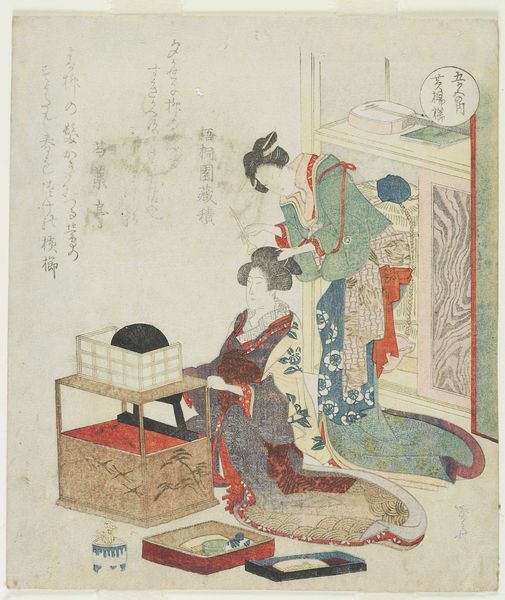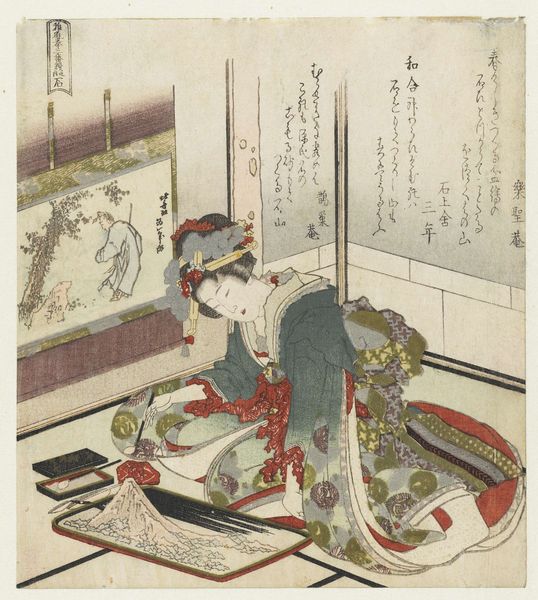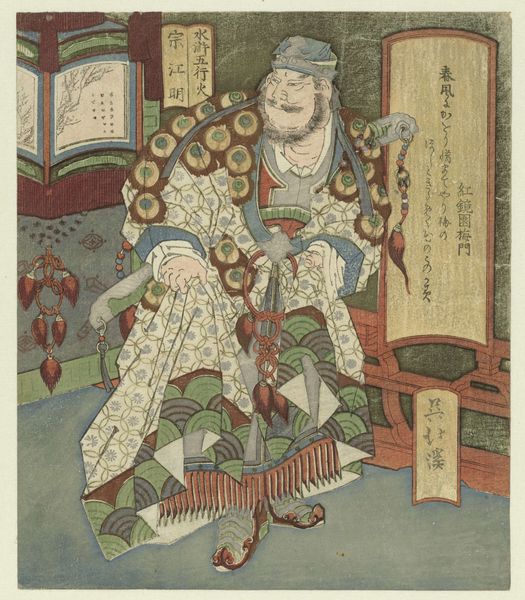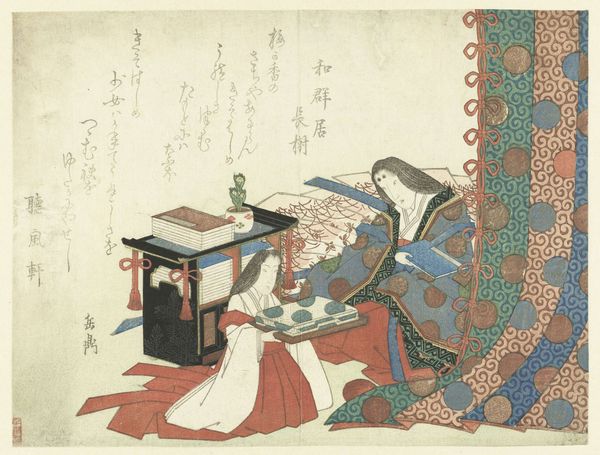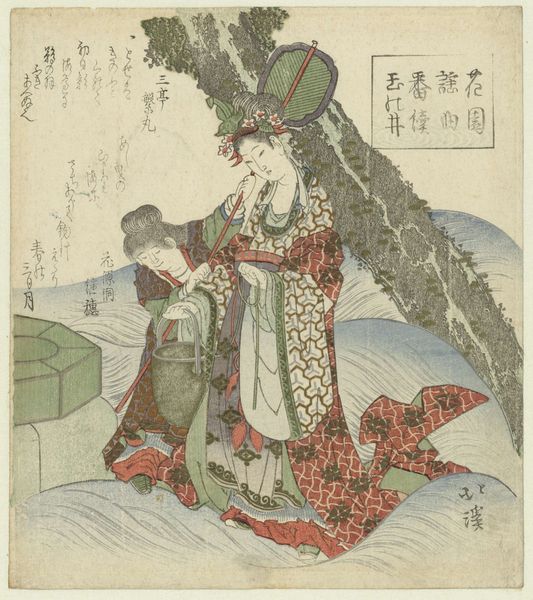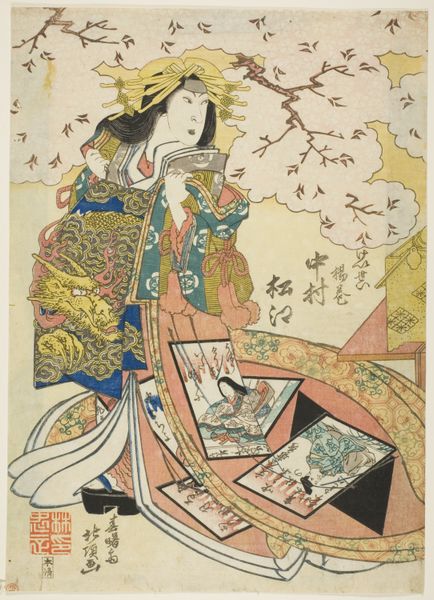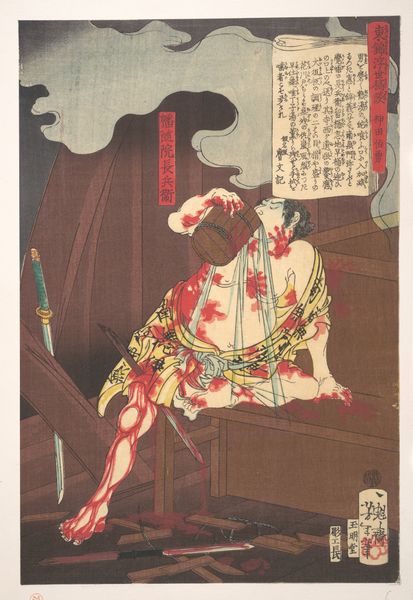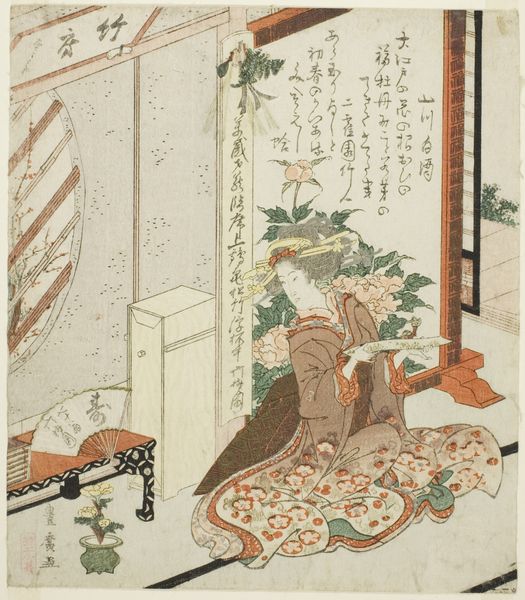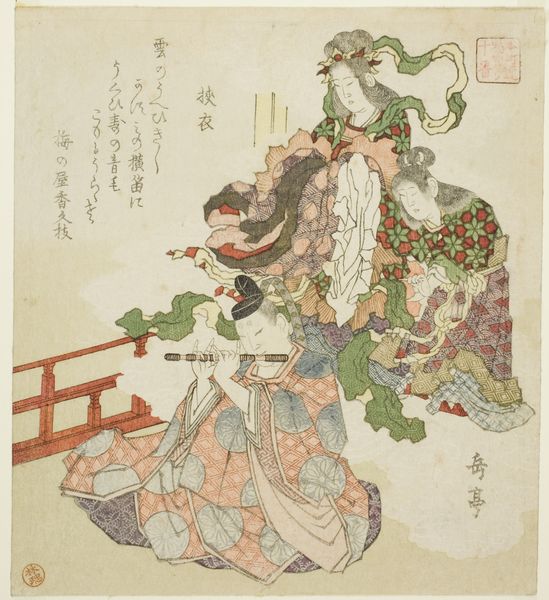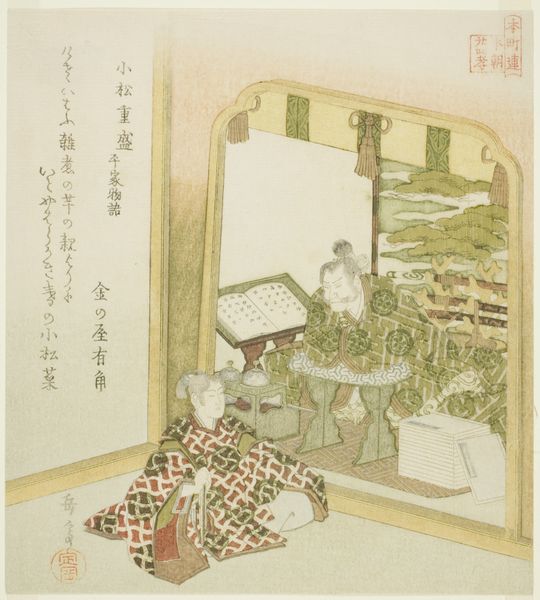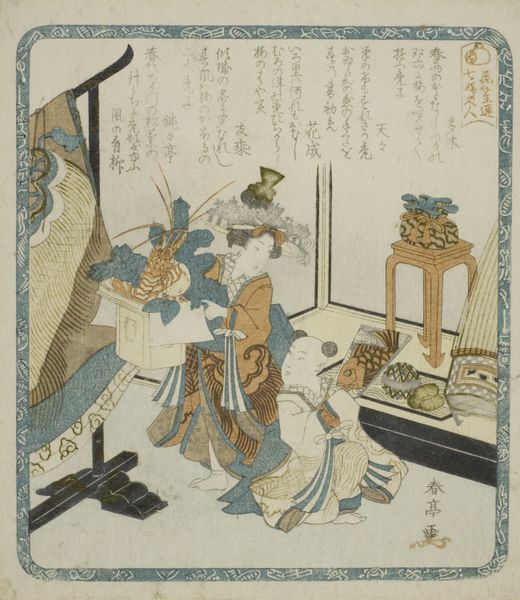
print, paper, watercolor, ink, woodblock-print
#
portrait
#
water colours
#
narrative-art
# print
#
asian-art
#
ukiyo-e
#
figuration
#
paper
#
watercolor
#
ink
#
woodblock-print
#
genre-painting
Dimensions: height 216 mm, width 191 mm
Copyright: Rijks Museum: Open Domain
Editor: Here we have Totoya Hokkei’s "A Man Playing Backgammon with a Lady," made around 1822. It’s a beautiful woodblock print. The figures and their clothing are so detailed, but I’m curious about the game itself. What’s significant about portraying this specific game? Curator: Well, let’s consider the material conditions of its creation. This is a print, suggesting a level of accessibility. Who would be playing backgammon, and who would be consuming images of it? Ukiyo-e prints, like this, catered to a rising merchant class in Edo-period Japan. Editor: So, it's not just about the people in the picture, but who might have bought and displayed it? Curator: Exactly. The print signifies a burgeoning consumer culture. Backgammon, here, represents a leisure activity accessible to those with disposable income. The materials - ink, paper, woodblocks – all speak to a developing industry. Consider the labor involved, from the artist’s design to the block cutter’s skill, and the printer carefully applying color. Editor: That’s interesting. I usually focus on symbolism, but the process never really occurred to me. Does the choice of the backgammon game mean something beyond leisure? Curator: Possibly. Games of strategy like this could be seen as metaphors for social maneuvering, mirroring the ambitions of this emerging class. How did this change your perception of the artwork? Editor: Thinking about it as a product of its time makes the image much more grounded. I still see the artistry, but I’m also more aware of the broader context and the socio-economic implications. Thank you! Curator: Understanding the materiality and the means of production adds another layer of depth, doesn't it? It's more than just aesthetics; it's about how art reflects and shapes the world around it.
Comments
No comments
Be the first to comment and join the conversation on the ultimate creative platform.
